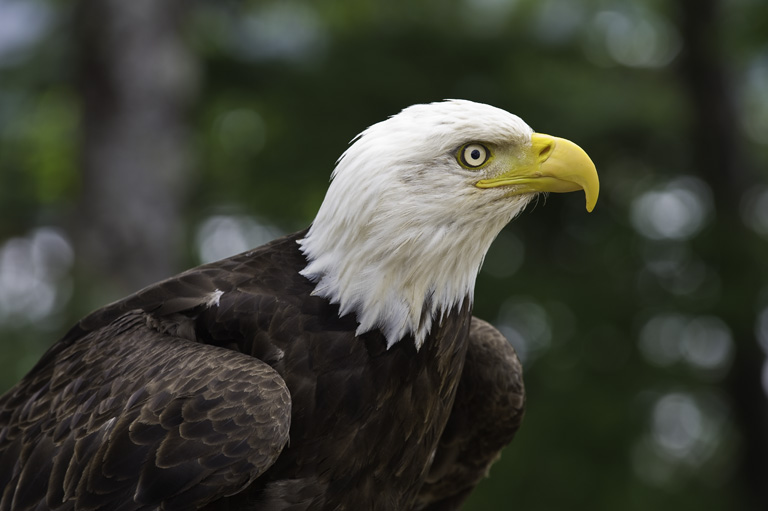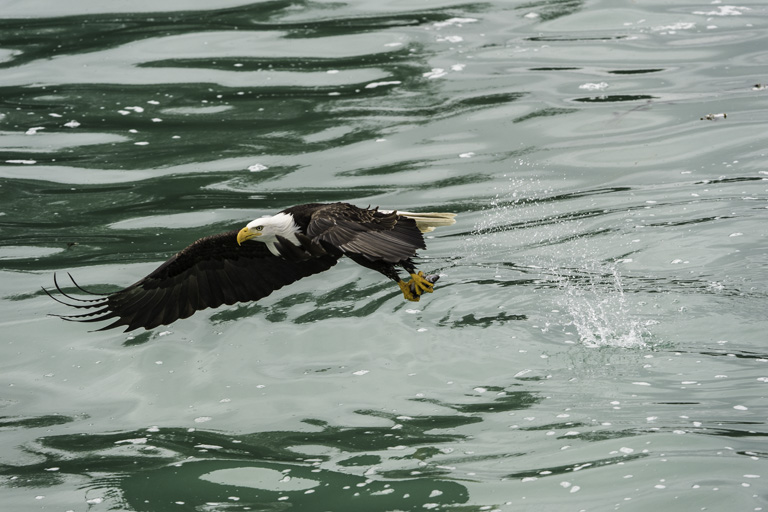
STATUS
Federal: Protected
State: Endangered
POPULATION TREND
= Stable
FAMILY
Accipitridae, with hawks, kites, harriers and other eagles
RANGE
Areas of Alaska and Canada in the north to Baja California in the south
Important Environmental Factors

Low levels of paved or compacted ground (<10%)

Greater than 1,000 millimeters per year

Low rainfall during the warm season
Habitat and Behavior
The bald eagle can be found near rivers, large lakes, and marshes, where they hunt for fish (their staple food), waterfowl, rabbits, snakes, and other small animals. Adult bald eagles build their nests near these water sources in order to have easy access to prey. Nests are often built on cliffs or in tall trees like pine, spruce, fir, oak, and sycamore.
History
Bald eagle populations suffered a great decline in the early twentieth century due to habitat loss, human disturbance, contamination, illegal shooting, and urban development. As birds of prey, bald eagles can accidentally ingest poisonous substances intended for other organisms. These include DDT (used as a pesticide after World War II), which the eagles would ingest after eating contaminated fish, and lead, which they encounter when feeding on animals shot by humans.
Recovery and Current Status
The national bird of the United States was once a federally-listed endangered species. They have made an astounding recovery in recent decades, aided by protective legislation such as the Bald Eagle Protection Act in 1940, which prevented the killing, selling, and capture of bald eagles, and the Endangered Species Preservation Act in 1967. The species was federally delisted in 2005. However, despite stable (or even increasing) populations in some areas, bald eagles continue to face many of the same threats that they have in the past and are still listed as endangered in California.

Data source:
Species records provided by eBird. 2017. eBird: An online database of bird distribution and abundance [web application]. eBird, Cornell Lab of Ornithology, Ithaca, New York.
Acknowledgements:
We would like to thank Ashley Campfield for her research assistance.